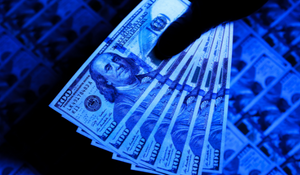
Detecting Counterfeits with Optical Filters
For centuries, forgery has been a problem that numerous industries encounter, some more than others, and the problem still exists today. Over time, optics have been improved upon and utilized to detect counterfeit items, helping to remove them from circulation. In this blog, we’ll discuss how optics are used in the detection and prevention of counterfeits in currency and artwork.
HOW TO DETECT COUNTERFEIT MONEY WITH UV LIGHT
Counterfeit currency is an issue that all countries face. Luckily, optics have played an important role in improving the methods that officials and businesses alike use to detect fake money, keeping it from being exchanged. Counterfeiting measures have become so sophisticated that they are nearly imperceptible to the naked eye. Optical equipment is widely used to determine whether or not currency is counterfeit, allowing us to take a deeper look at the physical elements of money.
One of the most common types of counterfeit detection is provided by 365nm blue ultraviolet (UV) light. The concept is simple; real banknotes have no reaction when placed under florescent lighting, but counterfeit banknotes will light right up. The notion is that the paper used in United States dollar bills has a high starch content, making it appear dull under UV light. Counterfeiters usually use bond paper that’s bleached with little starch content, causing a greater reaction to the UV light.
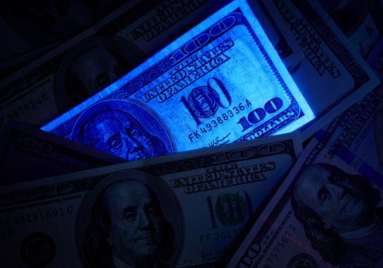

Figure 1.0 (Source: www.123rf.com)
This is just one way business owners can quickly scan bills to ensure they’re legitimate. In addition to paper type; magnetic ink, subtle watermarks and color-shifting inks are included on U.S. dollar bills that are extremely difficult to replicate.
That being said, a variety of automated machines such as ATM’s, vending machines, and self-service checkouts have safeguards in place to ensure bills and coins are genuine. These protections incorporate ultraviolet, infrared spectrometry and magnetic detectors to examine indicators and properties unique to dollar bills and coins.
The counterfeit equipment in automated machines uses optical filters and lenses, an LED light source, an infrared camera and an image processor. Optical sensors are used to scan for a number of parameters, some of which include, size, thickness and the unique features of the 3D band and security strip. Below is an image of a bill validator commonly used on vending machines.
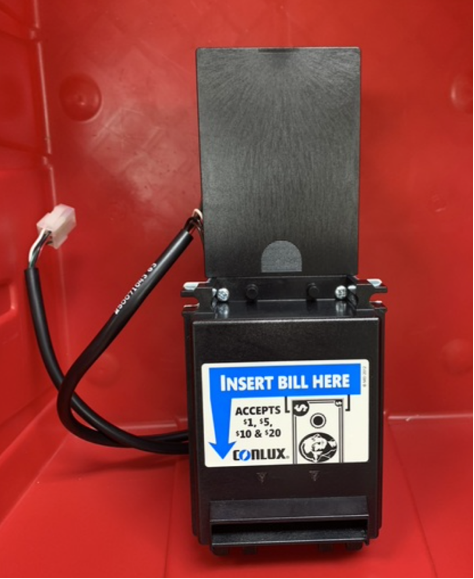
Figure 2.0 (Source: https://asintl.us/bill-validators/)
DETECTING ART FORGERIES USING UV OPTICAL BANDPASS FILTERS
Currency isn’t the only thing that is often counterfeited. Artwork has been a victim of this crime for decades. Paintings in particular have a high cultural and commercial value, making them a target for forgeries. Approximately $64 billion is spent on art every year and anywhere from 2 to 50 percent of those pieces are counterfeits. Since artwork can be delicate, methods used to detect pieces for forgery need to be careful when evaluating them.
Once again, UV light and optical bandpass filters are used in detecting art forgeries. Ultraviolet light makes the varnish on old paintings shine. Newer paintings, however, don’t fluoresce as much and emit an uncanny uniform glow. Though this method is effective, it has its downsides. Too much exposure to UV radiation from both natural and artificial light can damage works of art over time, sometimes irreparably.
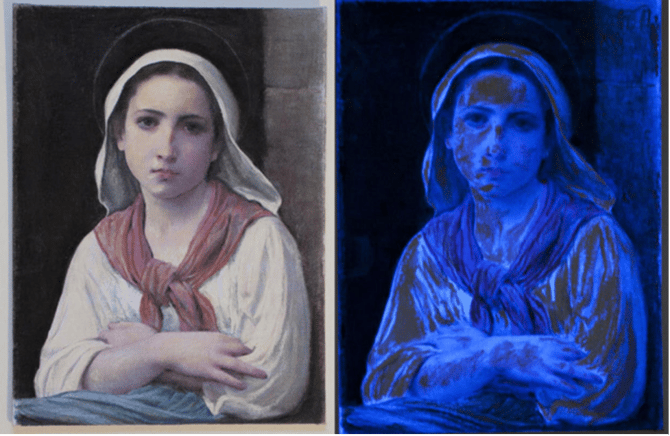
Figure 3.0 Painting Under UV Light (Source: www.cbsnews.com/pictures/art-forgeries)
One of the more favored methods is optical coherence tomography (OCT). It’s well-known as a non-invasive, contactless and highly resolved imaging method. It was originally used to examine the retina of the eye but researchers have found another purpose for this technology in examining pieces of art. OCT uses near infrared (NIR) light waves to take thousands of images of an item to create 2D and 3D images. Using light at a long wavelength makes it possible for the scan to penetrate further under the surface as compared to a microscope.
Paintings are typically built up in layers. The very back of the painting is the canvas itself and the artist applies layers of paint, followed by varnish or glaze, to preserve the painting as they go. Since the layers are exposed with OTC, art specialists are able to examine these layers for authenticity.
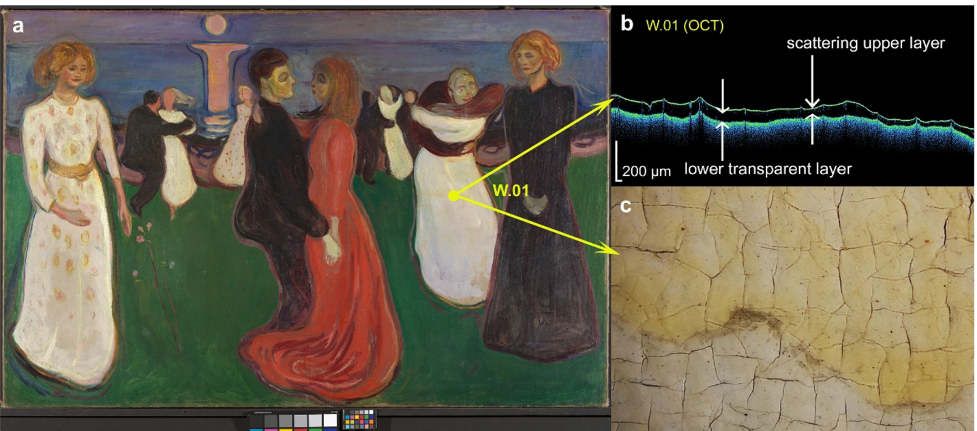
Figure 4.0 The Dance of Life
(Source https://link.springer.com/article/10.1140/epjp/s13360-021-01758-5/figures/6)
In the upper right corner of the figure above, you’ll see a graph depicting OTC. In this case, it was successful in capturing the varnish disparity, confirming this painting is authentic and not in fact a forgery.
As we have shown, the use of optics has vastly improved the detection and prevention of counterfeits in both currency and artwork. It continues to allow our society to overcome these challenges and will continue to do so as these technologies are developed even further. Andover Corporation is proud to supply optical filters that help fight against this crime.
RESOURCES
http://www.hypoptics.com/about-us/resources/the-use-of-filter-in-the-counterfeit-detector.html
https://www.emf-corp.com/optical-coatings/infrared-imaging-for-counterfeit-detection/
https://www.mentalfloss.com/article/88964/9-ways-science-helps-catch-counterfeit-art
